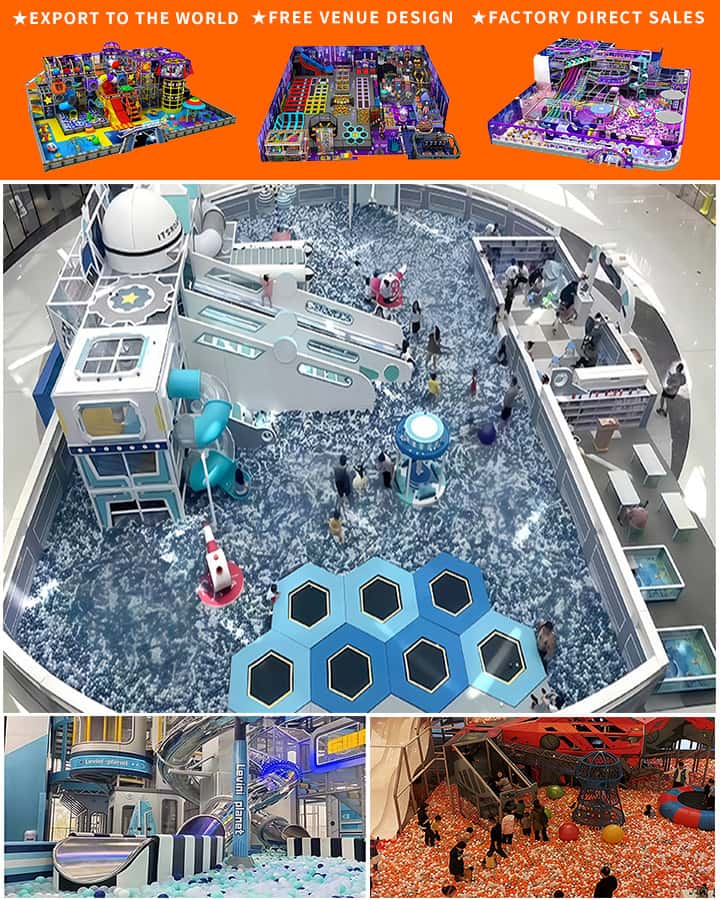In recent years, family-friendly restaurants have been increasingly incorporating indoor play areas to cater to young children, making dining out a more enjoyable experience for both parents and kids. Designing an effective and safe indoor play area within a restaurant requires thoughtful planning and consideration of several key factors. This guide will walk you through the essential elements needed to create an appealing and secure play zone that keeps children entertained while parents dine comfortably.
Importance of Indoor Play Areas in Restaurants
The primary purpose of an indoor play area in a restaurant is to provide a safe and engaging environment where children can play while their parents enjoy their meals. This not only enhances the overall dining experience but also encourages repeat visits. When parents know their children will be entertained, they are more likely to choose your restaurant over competitors.
Key Considerations for Creating an Indoor Play Area
Safety First Safety is paramount when designing an indoor play area. Ensure all equipment is age-appropriate and built to safety standards. Use soft flooring materials like rubber mats or foam to cushion falls and eliminate sharp edges. Regularly inspect the play area for any hazards and maintain the equipment to ensure it remains safe for use.
Design and Layout The layout should allow for easy supervision by parents while maintaining an exciting and stimulating environment for children. Consider using transparent barriers or low partitions to keep children visible and within reach. Integrate bright colors, themes, and decorations that appeal to kids and stimulate their imagination.

Size and Capacity The size of the play area should be proportionate to the number of seats in the restaurant to avoid overcrowding. Make sure there is enough space for children to move around freely without bumping into each other. Calculate the capacity based on peak dining times to ensure every child has ample room to play.
Variety of Play Equipment Offer a variety of play structures such as slides, climbing frames, ball pits, and interactive toys to cater to different interests and age groups. Rotate toys periodically to keep the play area fresh and engaging. Include educational elements like puzzles and building blocks to promote cognitive development.
Hygiene and Maintenance Children are prone to spilling food and drinks, so the play area should be easily accessible for cleaning. Use washable materials for seating and floor coverings, and establish a regular cleaning schedule. Encourage good hygiene practices among children by providing hand sanitizing stations near the play area.
Supervision and Staff Training Ideally, have dedicated staff or trained employees monitor the play area to ensure children’s safety. Train staff to handle common situations like minor injuries or disputes calmly and efficiently. Clearly communicate house rules for the play area to parents and enforce them consistently.
Noise Management While some noise is expected in a children’s play area, excessive noise can disturb other diners. Use soundproofing materials or strategically place the play area to minimize disruptions. Consider quieter activities like coloring stations or reading corners for older children who prefer less boisterous play.
Benefits of an Indoor Play Area
Implementing a well-designed indoor play area offers numerous benefits:
- Increased Customer Satisfaction: Parents appreciate the convenience and peace of mind that comes with knowing their children are safely entertained.
- Longer Dining Times: With kids engaged and happy, families tend to stay longer, leading to increased sales.
- Positive Word of Mouth: Satisfied customers are likely to recommend your restaurant to friends and family, helping to build a loyal customer base.
- Competitive Edge: An appealing play area can set your restaurant apart from others, attracting more customers in a competitive market.
Conclusion
Creating an indoor play area for kids in a restaurant involves careful planning and consideration of various factors including safety, design, and maintenance. By focusing on these key elements, you can provide a fun and secure environment that enhances the dining experience for families and contributes to the success of your restaurant. Investing in a well-thought-out play area not only pleases your younger clientele but also fosters a welcoming atmosphere that encourages repeat business.




